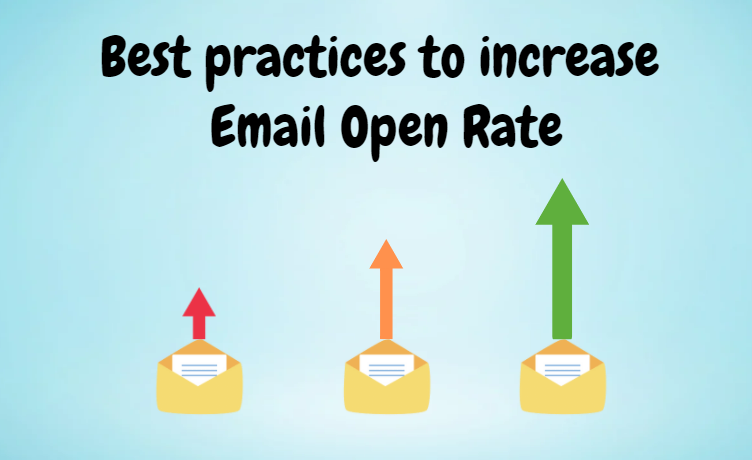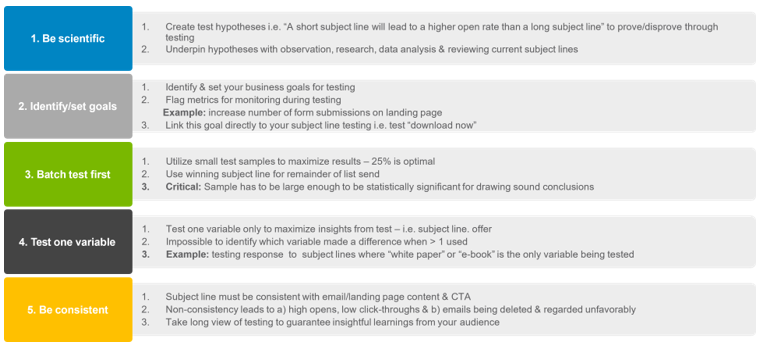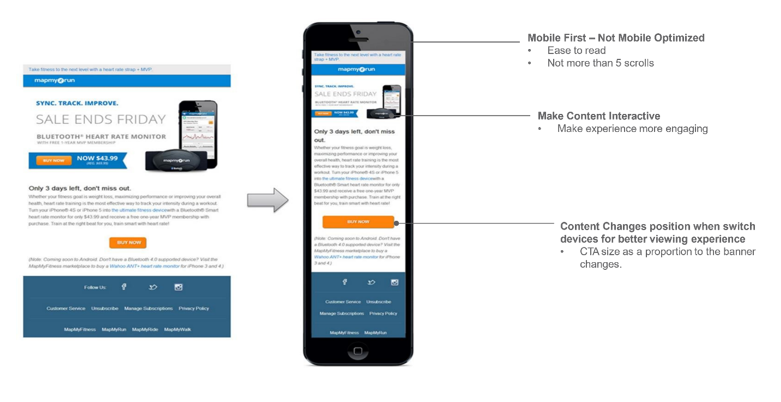Email open rates are the percentage of emails opened. They are a measure of the success of an email marketing campaign. The higher the opening rate, the better.
Email open rates give you an idea about how well your email marketing campaign is doing and what kind of messages your audience prefers. It also helps you determine which type of content to use in future campaigns.

Companies often underestimate the importance of email open rates. Because they don’t realize that they can use this metric to identify what works and what doesn’t in their marketing campaigns.
Email open rates are calculated by dividing the total number of opens by the total number of emails sent. The following are a few factors that affect email opening rates.
1. TIME-RELATED FACTORS
Schedule the email deployments to optimize these time-related factors that affect the email opening rates.
Best Practices:
Deployment Time/Day
- Deployment during mid-day (10 am-12 pm) mid-week (Tue-Thu) tends to do better
- Take the different time zones into consideration
- Do A/B test as the optimal time is dependent on the nature of the company and the type of audience
Frequency
- Sending too many emails may cause subscribers to opt-out or even mark the emails as spam
- Sending too many emails affects brand awareness
- Review the frequency of deployments if the unsubscribe rate is high
2. SENDER NAME
A sender name is one of the first things to be seen in an inbox. It is part of a company’s image and branding.
A bad sender name will affect email deliverability in the long run.

Best Practices:
- Use a recognizable and relevant name
- Do not use an email address as the sender’s name
3. SUBJECT LINE
The subject line is a one-line description of the email. It may be the first and only shot at connecting with a customer or business contact.
If it fails to capture people’s attention, they will move on to the next message in the inbox.

Best Practices:
- Keep it brief– keep subject lines below 50 characters.
- Build trust– the content of the email should be consistent with the promise made in the subject line.
- Limit hard sell– show value to the subscriber instead of self-promoting.
- Reduce spam scores– limit usage of all caps, exclamation marks, the word “free”, and other elements that increase your spam score.
Learn more about Avoiding spams in email marketing?
4. SUBJECT LINE TESTING PLAN TEMPLATE
Subject line testing is sending similar content across different groups of people at the same time by changing only their subject line. You then monitor which group had the higher open rate, so you know which subject line was most effective.
Focus on the following factors to plan the template for subject line testing.
a) Be Scientific
- Create test hypotheses to prove/disprove through testing. i.e., a short subject line will lead to a higher open rate than a long subject line
- Underpin hypotheses with observation, research, data analysis, and reviewing current subject lines.
b) Identify/Set goals
- Identify and set your business goals for testing
- Flag metrics for monitoring during testing
Example: Increase number of form submissions on the landing page
- Link this goal directly to your subject line testing. i.e., Test Download now as the subject line
c) Batch test first
- Utilize small test samples to maximize results – 25% is optimal
- Use a winning subject line for the remainder of the list send
- Critical: Sample must be large enough to be statistically significant for drawing sound conclusions
d) Test one variable
- Test one variable only to maximize insights from the test – i.e., the subject line offers
- Impossible to identify which variable made a difference when you use more than one variable
Example: Testing response to subject lines for the only variable White paper or e-book
e) Be Consistent
- The subject line must be consistent with email/landing page content and Call-To-Action
- Non-consistency leads to,
- High opens, low click-throughs
- Emails being deleted & regarded unfavorably
- Take a long view of testing of guarantee insightful learnings from your audience

Best Practices:
a) Don’t ask questions
- Instead of asking “Missing too many project deadlines?” use “Eliminate missed project deadlines”
- Why? Questions put the onus & responsibility on the reader to decide whether he/she has a problem in the first place
- A “no” means you’ve lost them so avoid asking questions at all costs
b) Show value in the first two words
- Push the value/relevancy of a particular email in the first two words
- Convey the intended benefit for your email target audience
Example: CAN-SPAM – Must-Know Updates performed better than Alert: Analysis of New CAN-SPAM Rules
c) Optimal trigger words
- Use the right words from start to finish to trigger response
Example: A name, the use of numbers, the number of characters in the subject line, the use of an industry phrase, or the appearance of an unusual word
- Test to discover which words work
d) Limit hard sell
- Minimize hard sell to maximize results
- Avoid self-promotion and ask readers to do something
- Always offer immediate value for any action requested of the recipient
Example: Register now & receive our latest whitepaper…
e) Do first
- Write subject lines at the start of the planning process
- Craft descriptive subject lines first to bring focus to the overall campaign
- Use Google Insights for Search to source word/patterns across geography, categories, and time

5. PREHEADER
Preheader, also known as the preview text, is pulled from the first few lines of text in the email. It follows the subject line and conveys vital information so that recipients understand the content of the email.
Best Practices:
- Avoid using “Having trouble? View as a web page” as the first line in the email as it does not encourage to further opens
6. MOBILE OPTIMIZED
Mobile optimization is the process of optimizing a website or app to provide an optimal user experience in a tailored way for mobile devices. A better mobile optimization strategy can increase your email open rate.

Best practices:
- Optimizing your images for different screen sizes
- Creating a responsive design
- Use concise text to avoid scrolling on a small screen
- Make sure links are easy to tap
Subscribe to blogs
Get our latest blogs directly to your inbox.

